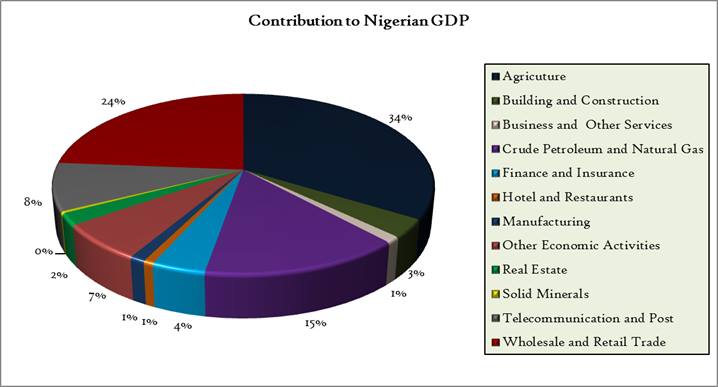There are no products in your shopping cart.
| 0 Items | £0.00 |

 NIGERIA's economic growth slipped significantly between 2015 and 2018 according to a new report by the World Bank titled Africa’s Pulse which looked at the macroeconomic variables of 44 sub-Saharan African countries between 1995 and 2018.
NIGERIA's economic growth slipped significantly between 2015 and 2018 according to a new report by the World Bank titled Africa’s Pulse which looked at the macroeconomic variables of 44 sub-Saharan African countries between 1995 and 2018.
This report, which focused on the macroeconomic and financial features that led to growth resilience on the continent, compared the average annual gross domestic product (GDP) growth rates during 1995 to 2008 and 2015 and 2018 against pre-determined thresholds. Tagged taxonomy, the World Bank criteria looked at included the level of income per capita of the countries, structural transformation as captured by sectoral value-added share and sectoral employment share and finally capital flows.
Other criteria looked at include the level and composition of public sector indebtedness as captured by the general government gross debt and its currency composition and the outstanding external public debt. The last of the indicators has to do with governance vis-a-vis government effectiveness, regulatory quality, control of corruption, voice and accountability, political stability and the absence of violence and rule of law.
“If a country’s economic performance declined from 1995–2008 to 2015–18, the country is categorised in the bottom tercile, which includes falling behind and slipping. If a country’s growth rate remained invariant over time, between 3.5% and 5.4% in both periods, it is categorised in the middle tercile or stuck in the middle.
"If a country’s economic performance improved from 1995–2008 to 2015–18, with the growth of more than 5.4% per year, the country is categorised in the top tercile, which includes the improved’ and established’ groups. Based on the above classification, the Nigerian economy was categorised alongside 18 other sub-Saharan African economies as slipping having recorded declined economic performance between 1995 and 2018.
“The bottom tercile consists of 19 countries including Angola, Burundi, Botswana, the Republic of Congo, the Comoros , Gabon, Equatorial Guinea, Liberia, Lesotho, Mauritania, Malawi, Namibia, Nigeria, Sierra Leone, Eswatini, Chad, South Africa, Zambia and Zimbabwe. These countries did not show any progress in their economic performance from 1995–2008 to 2015–18 as for instance, their median economic growth rate decelerated, from 5.4% per year in 1995–2008 to 1.2% per year in 2015–18,” the World Bank report added.
However, the report added that the bottom performing economies, produce almost 60% of the region’s total GDP, emphasising that the three largest countries in the region Nigeria, South Africa, and Angola and many commodity exporters are in this group. Burkina Faso, Côte d’Ivoire, Ethiopia, Ghana, Guinea, Guinea-Bissau, Kenya, Mali, Rwanda, Senegal, and Tanzania made the top tercile.
Middle tercile countries include Benin, the Central African Republic, Cameroon, the Democratic Republic of Congo, Cape Verde, Gambia, Madagascar, Mozambique, Mauritius, Niger, Sudan, São Tomé and Príncipe, Togo and Uganda. Meanwhile, the World Bank also cut its growth forecast for sub-Saharan Africa this year to 2.8% from an initial 3.3%.